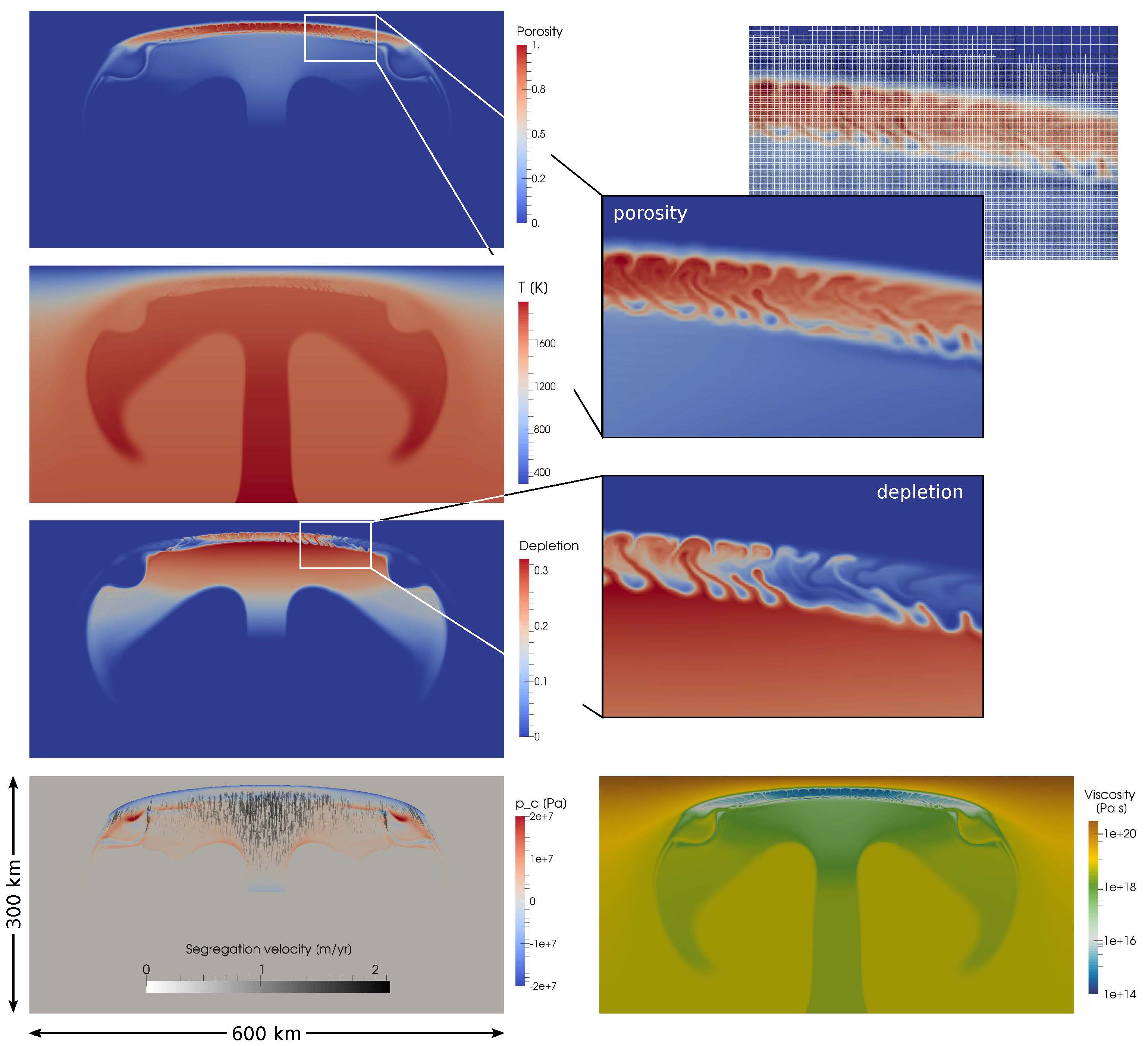Melt generation and migration are important processes for the evolution of the Earth's interior and impact the global convection of the mantle. While they have been the subject of numerous investigations, the typical time and length-scales of melt transport are vastly different from global mantle convection, which determines where melt is generated. This makes it difficult to study mantle convection and melt migration in a unified framework. Moreover, modelling magma dynamics poses the challenge of highly non-linear and spatially variable material properties, in particular the viscosity.
Dannberg and Heister (2015) extend the community mantle convection code ASPECT (Advanced Solver for Problems in Earth’s Convection), adding equations that describe the behaviour of silicate melt percolating through and interacting with a viscously deforming host rock. Applying ASPECT's adaptive mesh refinement to this type of problems is particularly advantageous, as the resolution can be increased in mesh cells where melt is present and viscosity gradients are high, whereas a lower resolution is sufficient in regions without melt. Together with the high-performance, massively parallel implementation, this allows for high resolution, 3d, compressible, global mantle convection simulations coupled with melt migration.
 Figure 1
Figure 1
This method is applied to simulations of melting in mantle plumes: The model is a Cartesian box, extending from the Earth's surface to 300 km depth and 600 km horizontally. The initial temperature profile is adiabatic, with a cold top thermal boundary layer corresponding to oceanic lithosphere. A spherical perturbation is added in the center of the bottom boundary of the model to start the plume ascent. The rheology is purely Newtonian, but both shear and compaction viscosity are temperature- and porosity-dependent, eventually leading to viscosity variations of 6 orders of magnitude in the model.
The plume ascends from the bottom of the model due to its high buoyancy. At a pressure of approximately 5 GPa material starts to melt, lowering the viscosities and further reducing the density. While the plume rises, the melt first accumulates at its top until it reaches a depth of 50 km, where melt starts to separate from the plume head, moving further up and spreading laterally at the base of the lithosphere (Figure 1). The generated shear initiates small-scale downwellings of cold and dense lithosphere above into the low-viscosity plume material, leading to mixing in the plume head and thinning of the lithosphere.
The implementation of magma dynamics provides a framework for modelling processes on different scales and investigating links between processes occurring in the deep mantle and melt generation and migration.
The ASPECT code, toegther with an extensive documentation, is available online under an Open Source license (https://geodynamics.org/cig/software/aspect/).
Dannberg, J., Heister, T. (2015). 3D Compressible Melt Transport with Mesh Adaptivity. Submitted to Geophysical Journal International.